





Academic Authors: Sneha Sharma, Chandni Bhargava, Vandana Sekhri
Book Production: Vishesh Agarwal, Amisha Gupta, Narendra Shahi
VP, Learning: Abhishek Bhatnagar
All products and brand names used in this book are trademarks, registered trademarks or trade names of their respective owners.
© Uolo EdTech Private Limited
First published in 2025
This book is sold subject to the condition that it shall not by way of trade or otherwise, be lent, resold, hired out, or otherwise circulated without the publisher’s prior written consent in any form of binding or cover other than that in which it is published and without a similar condition including this condition being imposed on the subsequent purchaser and without limiting the rights under copyright reserved above, no part of this publication may be reproduced, stored in or introduced into a retrieval system, or transmitted in any form or by any means, electronic, mechanical, photocopying, recording or otherwise, without the prior written permission of both the copyright owner and the above-mentioned publisher of this book.
Book Title: Dawn FA & SA Level C Part-I
Published by Uolo EdTech Private Limited
Corporate Office Address:
91Springboard, 3rd Floor
145, Sector 44, Gurugram, Haryana 122003
CIN: U74999DL2017PTC322986
Illustrations and images: www.shutterstock.com, www.stock.adobe.com and www.freepik.com
All suggested use of the internet should be under adult supervision.
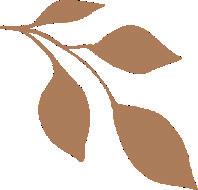
Assessing the progress of young learners in the foundational years requires a thoughtful approach that aligns with their developmental needs. On that note, this book presents a collection of assessments designed specifically for children, ensuring a balanced and engaging evaluation process.
In alignment with the National Curriculum Framework—Foundational Stage , these assessments embrace the principles of holistic development in children, focusing not just on their academic abilities but also on their cognitive, social, and language skills. The intent is to facilitate continuous and comprehensive evaluation that informs educators and parents about their learners’ progress in a meaningful and developmentally appropriate manner.
This book includes 10 copies of each assessment, aligned with the concepts taught at specific intervals: after 8 weeks for Formative Assessment 1, after the following 10 weeks for Formative Assessment 2, and after the first 18 weeks for Summative Assessment 1, as outlined in the teacher’s manual. Each Formative assessment follows a structured yet simple format, consisting of a 2 pages, detachable question paper with 3 questions each from Literacy, Numeracy, and General Awareness. Similarly Summative Assessment follows a structured yet simple format, consisting of a 4 pages, detachable question paper with 5 questions each from Literacy, Numeracy, and General Awareness
The questions in the assessments are to be read aloud by the teacher and explained to the learners. These assessments aim to provide the teacher with a clear picture of the young learners’ progress in various learning outcomes and competencies, as recommended in the NCF-FS, and to measure the understanding of concepts. Moreover, the carefully curated assessments encourage revision of key concepts at regular intervals, making the assessment process an extension of the child’s natural learning journey.
1. Holistic Assessments: Covers General Awareness, Literacy, and Numeracy in each assessment, ensuring a well-rounded evaluation.
2. Child-friendly Format: Simple and engaging question papers designed especially for learners.
3. Analysis of Learning Outcomes: Tracks the learners’ understanding of the concepts on an outcome analysis table across three levels of progress, which are
Beginner (B): when the learner tries to achieve the learning outcome with a lot of support from the teacher. Learner (L): when the learner achieves the learning outcome with occasional/limited support from the teacher.
Proficient (P): when the learner achieves the learning outcome on his/her own.
4. Teacher- & Parent-friendly Assessments: Provides clear insights into the learners’ progress, thereby enabling informed support and guidance.

We trust that this book will serve as a valuable and easy-to-use resource for teachers, caregivers, and parents in guiding learners through early educational milestones.









Name: Date:

1. Look at the picture. Say its name aloud. Then, fill in the blank with the correct letter.
2. Look at pictures. Circle the correct starting letter.

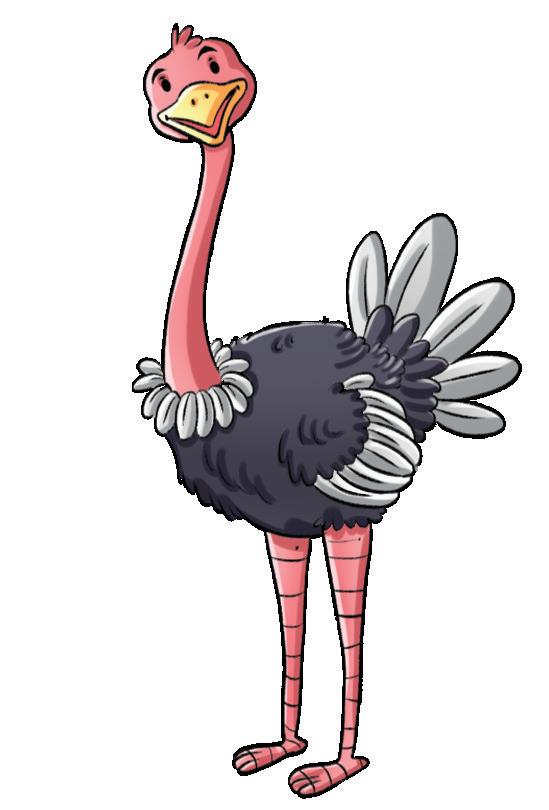
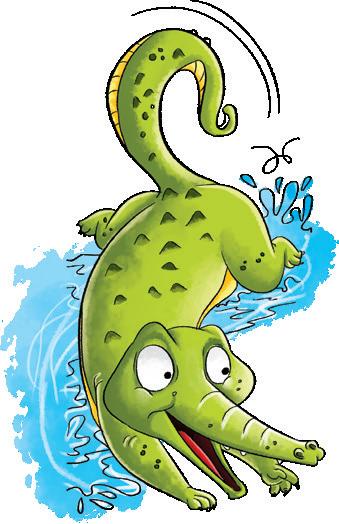
3. Colour 5 balloons that have vowels in them.
Y O A P Q J E I U Z
Complete a CVC word using the middle sound /a/ correctly.
Identify the starting sound and letter of a picture.
Identify the vowels correctly.





Name: Date:

1. Look at the picture. Say its name aloud. Then, fill in the blank with the correct letter.
2. Look at pictures. Circle the correct starting letter.



3. Colour 5 balloons that have vowels in them.
Y O A P Q J E I U Z
Complete a CVC word using the middle sound /a/ correctly.
Identify the starting sound and letter of a picture.
Identify the vowels correctly.





Name: Date:

1. Look at the picture. Say its name aloud. Then, fill in the blank with the correct letter.
2. Look at pictures. Circle the correct starting letter.



3. Colour 5 balloons that have vowels in them.
Y O A P Q J E I U Z
Complete a CVC word using the middle sound /a/ correctly.
Identify the starting sound and letter of a picture.
Identify the vowels correctly.





Name: Date:

1. Look at the picture. Say its name aloud. Then, fill in the blank with the correct letter.
2. Look at pictures. Circle the correct starting letter.



3. Colour 5 balloons that have vowels in them.
Y O A P Q J E I U Z
Complete a CVC word using the middle sound /a/ correctly.
Identify the starting sound and letter of a picture.
Identify the vowels correctly.





Name: Date:

1. Look at the picture. Say its name aloud. Then, fill in the blank with the correct letter.
2. Look at pictures. Circle the correct starting letter.



3. Colour 5 balloons that have vowels in them.
Y O A P Q J E I U Z
Complete a CVC word using the middle sound /a/ correctly.
Identify the starting sound and letter of a picture.
Identify the vowels correctly.





Name: Date:

1. Look at the picture. Say its name aloud. Then, fill in the blank with the correct letter.
2. Look at pictures. Circle the correct starting letter.



3. Colour 5 balloons that have vowels in them.
Y O A P Q J E I U Z
Complete a CVC word using the middle sound /a/ correctly.
Identify the starting sound and letter of a picture.
Identify the vowels correctly.





Name: Date:

1. Look at the picture. Say its name aloud. Then, fill in the blank with the correct letter.
2. Look at pictures. Circle the correct starting letter.



3. Colour 5 balloons that have vowels in them.
Y O A P Q J E I U Z
Complete a CVC word using the middle sound /a/ correctly.
Identify the starting sound and letter of a picture.
Identify the vowels correctly.





Name: Date:

1. Look at the picture. Say its name aloud. Then, fill in the blank with the correct letter.
2. Look at pictures. Circle the correct starting letter.



3. Colour 5 balloons that have vowels in them.
Y O A P Q J E I U Z
Complete a CVC word using the middle sound /a/ correctly.
Identify the starting sound and letter of a picture.
Identify the vowels correctly.





Name: Date:

1. Look at the picture. Say its name aloud. Then, fill in the blank with the correct letter.
2. Look at pictures. Circle the correct starting letter.



3. Colour 5 balloons that have vowels in them.
Y O A P Q J E I U Z
Complete a CVC word using the middle sound /a/ correctly.
Identify the starting sound and letter of a picture.
Identify the vowels correctly.





Name: Date:

1. Look at the picture. Say its name aloud. Then, fill in the blank with the correct letter.
2. Look at pictures. Circle the correct starting letter.



3. Colour 5 balloons that have vowels in them.
Y O A P Q J E I U Z
Complete a CVC word using the middle sound /a/ correctly.
Identify the starting sound and letter of a picture.
Identify the vowels correctly.






Name: Date:
1. Colour 2 things that look like triangles.
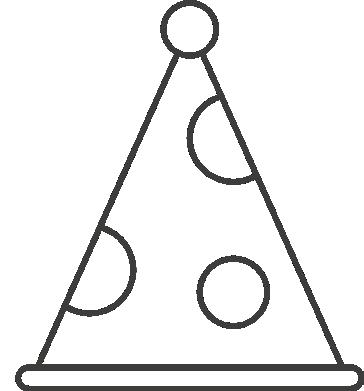
2. Which shapes can you see in this car? Tick (✓) them. rectangle star oval semi-circle
3. Look at the pictures. Tick (✓) the smallest tree.
Circle the animal that is bigger than the tiger.



Identify triangles in one’s surroundings correctly.
Identify different shapes such as a rectangle and a semi-circle.
Compare different sizes correctly.






Name: Date:
1. Colour 2 things that look like triangles.

2. Which shapes can you see in this car? Tick (✓) them. rectangle star oval semi-circle
3. Look at the pictures. Tick (✓) the smallest tree.
Circle the animal that is bigger than the tiger.



Identify triangles in one’s surroundings correctly.
Identify different shapes such as a rectangle and a semi-circle.
Compare different sizes correctly.






Name: Date:
1. Colour 2 things that look like triangles.

2. Which shapes can you see in this car? Tick (✓) them. rectangle star oval semi-circle
3. Look at the pictures. Tick (✓) the smallest tree.
Circle the animal that is bigger than the tiger.



Identify triangles in one’s surroundings correctly.
Identify different shapes such as a rectangle and a semi-circle.
Compare different sizes correctly.






Name: Date:
1. Colour 2 things that look like triangles.

2. Which shapes can you see in this car? Tick (✓) them. rectangle star oval semi-circle
3. Look at the pictures. Tick (✓) the smallest tree.
Circle the animal that is bigger than the tiger.



Identify triangles in one’s surroundings correctly.
Identify different shapes such as a rectangle and a semi-circle.
Compare different sizes correctly.






Name: Date:
1. Colour 2 things that look like triangles.

2. Which shapes can you see in this car? Tick (✓) them. rectangle star oval semi-circle
3. Look at the pictures. Tick (✓) the smallest tree.
Circle the animal that is bigger than the tiger.



Identify triangles in one’s surroundings correctly.
Identify different shapes such as a rectangle and a semi-circle.
Compare different sizes correctly.






Name: Date:
1. Colour 2 things that look like triangles.

2. Which shapes can you see in this car? Tick (✓) them. rectangle star oval semi-circle
3. Look at the pictures. Tick (✓) the smallest tree.
Circle the animal that is bigger than the tiger.



Identify triangles in one’s surroundings correctly.
Identify different shapes such as a rectangle and a semi-circle.
Compare different sizes correctly.






Name: Date:
1. Colour 2 things that look like triangles.

2. Which shapes can you see in this car? Tick (✓) them. rectangle star oval semi-circle
3. Look at the pictures. Tick (✓) the smallest tree.
Circle the animal that is bigger than the tiger.



Identify triangles in one’s surroundings correctly.
Identify different shapes such as a rectangle and a semi-circle.
Compare different sizes correctly.






Name: Date:
1. Colour 2 things that look like triangles.

2. Which shapes can you see in this car? Tick (✓) them. rectangle star oval semi-circle
3. Look at the pictures. Tick (✓) the smallest tree.
Circle the animal that is bigger than the tiger.



Identify triangles in one’s surroundings correctly.
Identify different shapes such as a rectangle and a semi-circle.
Compare different sizes correctly.






Name: Date:
1. Colour 2 things that look like triangles.

2. Which shapes can you see in this car? Tick (✓) them. rectangle star oval semi-circle
3. Look at the pictures. Tick (✓) the smallest tree.
Circle the animal that is bigger than the tiger.



Identify triangles in one’s surroundings correctly.
Identify different shapes such as a rectangle and a semi-circle.
Compare different sizes correctly.






Name: Date:
1. Colour 2 things that look like triangles.

2. Which shapes can you see in this car? Tick (✓) them. rectangle star oval semi-circle
3. Look at the pictures. Tick (✓) the smallest tree.
Circle the animal that is bigger than the tiger.



Identify triangles in one’s surroundings correctly.
Identify different shapes such as a rectangle and a semi-circle.
Compare different sizes correctly.





Name: Date:

1. Which of these things are soft to touch? Tick (✓) the 2 things.

2. Look at these pictures. Write I for indoor games. Write O for outdoor games.
3. Rohan goes to a fair. He gets lost. Tick (✓) what he should do next.



Identify things that are soft on the basis of the sense of touch.
Differentiate between indoor and outdoor games correctly.
Identify the correct action when one gets lost.





Name: Date:

1. Which of these things are soft to touch? Tick (✓) the 2 things.

2. Look at these pictures. Write I for indoor games. Write O for outdoor games.
3. Rohan goes to a fair. He gets lost. Tick (✓) what he should do next.



Identify things that are soft on the basis of the sense of touch.
Differentiate between indoor and outdoor games correctly.
Identify the correct action when one gets lost.





Name: Date:

1. Which of these things are soft to touch? Tick (✓) the 2 things.

2. Look at these pictures. Write I for indoor games. Write O for outdoor games.
3. Rohan goes to a fair. He gets lost. Tick (✓) what he should do next.



Identify things that are soft on the basis of the sense of touch.
Differentiate between indoor and outdoor games correctly.
Identify the correct action when one gets lost.





Name: Date:

1. Which of these things are soft to touch? Tick (✓) the 2 things.

2. Look at these pictures. Write I for indoor games. Write O for outdoor games.
3. Rohan goes to a fair. He gets lost. Tick (✓) what he should do next.



Identify things that are soft on the basis of the sense of touch.
Differentiate between indoor and outdoor games correctly.
Identify the correct action when one gets lost.





Name: Date:

1. Which of these things are soft to touch? Tick (✓) the 2 things.

2. Look at these pictures. Write I for indoor games. Write O for outdoor games.
3. Rohan goes to a fair. He gets lost. Tick (✓) what he should do next.



Identify things that are soft on the basis of the sense of touch.
Differentiate between indoor and outdoor games correctly.
Identify the correct action when one gets lost.





Name: Date:

1. Which of these things are soft to touch? Tick (✓) the 2 things.

2. Look at these pictures. Write I for indoor games. Write O for outdoor games.
3. Rohan goes to a fair. He gets lost. Tick (✓) what he should do next.



Identify things that are soft on the basis of the sense of touch.
Differentiate between indoor and outdoor games correctly.
Identify the correct action when one gets lost.





Name: Date:

1. Which of these things are soft to touch? Tick (✓) the 2 things.

2. Look at these pictures. Write I for indoor games. Write O for outdoor games.
3. Rohan goes to a fair. He gets lost. Tick (✓) what he should do next.



Identify things that are soft on the basis of the sense of touch.
Differentiate between indoor and outdoor games correctly.
Identify the correct action when one gets lost.





Name: Date:

1. Which of these things are soft to touch? Tick (✓) the 2 things.

2. Look at these pictures. Write I for indoor games. Write O for outdoor games.
3. Rohan goes to a fair. He gets lost. Tick (✓) what he should do next.



Identify things that are soft on the basis of the sense of touch.
Differentiate between indoor and outdoor games correctly.
Identify the correct action when one gets lost.





Name: Date:

1. Which of these things are soft to touch? Tick (✓) the 2 things.

2. Look at these pictures. Write I for indoor games. Write O for outdoor games.
3. Rohan goes to a fair. He gets lost. Tick (✓) what he should do next.



Identify things that are soft on the basis of the sense of touch.
Differentiate between indoor and outdoor games correctly.
Identify the correct action when one gets lost.





Name: Date:

1. Which of these things are soft to touch? Tick (✓) the 2 things.

2. Look at these pictures. Write I for indoor games. Write O for outdoor games.
3. Rohan goes to a fair. He gets lost. Tick (✓) what he should do next.



Identify things that are soft on the basis of the sense of touch.
Differentiate between indoor and outdoor games correctly.
Identify the correct action when one gets lost.
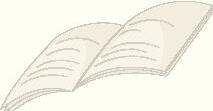






Formative Assessment - 2
Name: Date:

1. Look at the pictures. Say their names aloud. Circle the ones that have the middle /i/ sound.
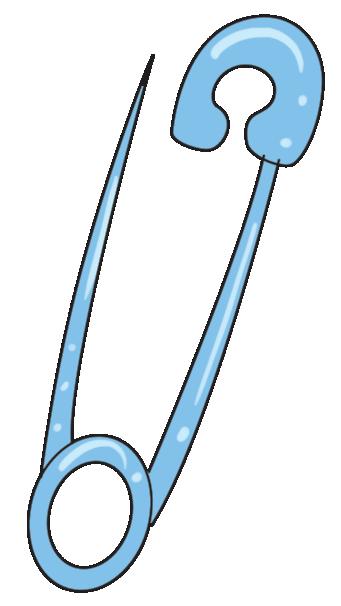


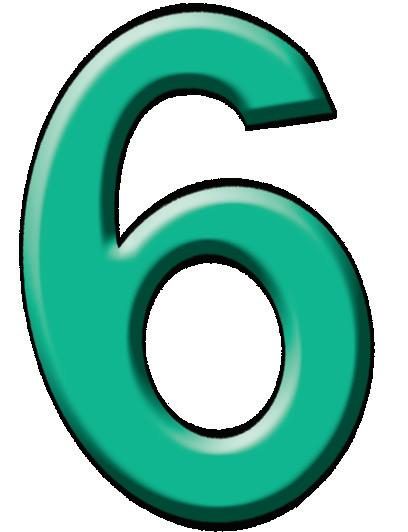
2. Look at the pictures. Underline the correct word.


3. Look at the pictures and circle the correct word.

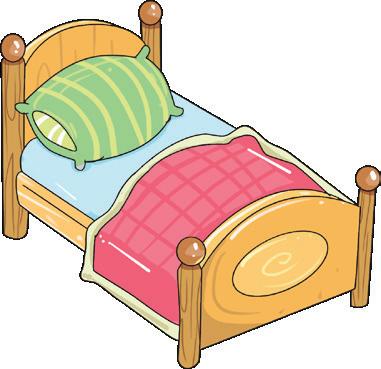
Identify pictures with the middle /i/ vowel sound.
Identify the correct words with the middle /o/ sound.
Identify the correct word with the middle /e/ sound.
Beginner
Learner
Proficient





Formative Assessment - 2
Name: Date:

1. Look at the pictures. Say their names aloud. Circle the ones that have the middle /i/ sound.




2. Look at the pictures. Underline the correct word.


3. Look at the pictures and circle the correct word.


Identify pictures with the middle /i/ vowel sound.
Identify the correct words with the middle /o/ sound.
Identify the correct word with the middle /e/ sound.
Beginner
Learner
Proficient





Formative Assessment - 2
Name: Date:

1. Look at the pictures. Say their names aloud. Circle the ones that have the middle /i/ sound.




2. Look at the pictures. Underline the correct word.


3. Look at the pictures and circle the correct word.


Identify pictures with the middle /i/ vowel sound.
Identify the correct words with the middle /o/ sound.
Identify the correct word with the middle /e/ sound.
Beginner
Learner
Proficient





Formative Assessment - 2
Name: Date:

1. Look at the pictures. Say their names aloud. Circle the ones that have the middle /i/ sound.




2. Look at the pictures. Underline the correct word.


3. Look at the pictures and circle the correct word.


Identify pictures with the middle /i/ vowel sound.
Identify the correct words with the middle /o/ sound.
Identify the correct word with the middle /e/ sound.
Learner
Proficient





Formative Assessment - 2
Name: Date:

1. Look at the pictures. Say their names aloud. Circle the ones that have the middle /i/ sound.




2. Look at the pictures. Underline the correct word.


3. Look at the pictures and circle the correct word.


Identify pictures with the middle /i/ vowel sound.
Identify the correct words with the middle /o/ sound.
Identify the correct word with the middle /e/ sound.
Beginner
Learner
Proficient





Formative Assessment - 2
Name: Date:

1. Look at the pictures. Say their names aloud. Circle the ones that have the middle /i/ sound.




2. Look at the pictures. Underline the correct word.


3. Look at the pictures and circle the correct word.


Identify pictures with the middle /i/ vowel sound.
Identify the correct words with the middle /o/ sound.
Identify the correct word with the middle /e/ sound.
Beginner
Learner
Proficient





Formative Assessment - 2
Name: Date:

1. Look at the pictures. Say their names aloud. Circle the ones that have the middle /i/ sound.




2. Look at the pictures. Underline the correct word.


3. Look at the pictures and circle the correct word.


Identify pictures with the middle /i/ vowel sound.
Identify the correct words with the middle /o/ sound.
Identify the correct word with the middle /e/ sound.
Beginner
Learner
Proficient





Formative Assessment - 2
Name: Date:

1. Look at the pictures. Say their names aloud. Circle the ones that have the middle /i/ sound.




2. Look at the pictures. Underline the correct word.


3. Look at the pictures and circle the correct word.


Identify pictures with the middle /i/ vowel sound.
Identify the correct words with the middle /o/ sound.
Identify the correct word with the middle /e/ sound.
Learner
Proficient





Formative Assessment - 2
Name: Date:

1. Look at the pictures. Say their names aloud. Circle the ones that have the middle /i/ sound.




2. Look at the pictures. Underline the correct word.


3. Look at the pictures and circle the correct word.


Identify pictures with the middle /i/ vowel sound.
Identify the correct words with the middle /o/ sound.
Identify the correct word with the middle /e/ sound.
Beginner
Learner
Proficient





Formative Assessment - 2
Name: Date:

1. Look at the pictures. Say their names aloud. Circle the ones that have the middle /i/ sound.




2. Look at the pictures. Underline the correct word.


3. Look at the pictures and circle the correct word.


Identify pictures with the middle /i/ vowel sound.
Identify the correct words with the middle /o/ sound.
Identify the correct word with the middle /e/ sound.
Beginner
Learner
Proficient






Name: Date:
1. Colour the balloons that have numbers between 71 to 80.
2. Count and write the number in the box for each set.


























10 and 1 more make _______ 10 and 5 more make _______
3. Look at the number and write the number name.
6
3 8 Learning Outcomes
Identifies the numbers between 71 and 80. Count the numbers by grouping in tens. Write the number names.
Beginner (B)
Learner (L)
Proficient (P)






Name: Date:
1. Colour the balloons that have numbers between 71 to 80.
2. Count and write the number in the box for each set.


























10 and 1 more make _______ 10 and 5 more make _______
3. Look at the number and write the number name.
6
3 8 Learning Outcomes
Identifies the numbers between 71 and 80. Count the numbers by grouping in tens. Write the number names.
Beginner (B)
Learner (L)
Proficient (P)






Name: Date:
1. Colour the balloons that have numbers between 71 to 80.
2. Count and write the number in the box for each set.


























10 and 1 more make _______ 10 and 5 more make _______
3. Look at the number and write the number name.
6
3 8 Learning Outcomes
Identifies the numbers between 71 and 80. Count the numbers by grouping in tens. Write the number names.
Beginner (B)
Learner (L)
Proficient (P)






Name: Date:
1. Colour the balloons that have numbers between 71 to 80.
2. Count and write the number in the box for each set.


























10 and 1 more make _______ 10 and 5 more make _______
3. Look at the number and write the number name.
6
3 8 Learning Outcomes
Identifies the numbers between 71 and 80. Count the numbers by grouping in tens. Write the number names.
Beginner (B)
Learner (L)
Proficient (P)






Name: Date:
1. Colour the balloons that have numbers between 71 to 80.
2. Count and write the number in the box for each set.


























10 and 1 more make _______ 10 and 5 more make _______
3. Look at the number and write the number name.
6
3 8 Learning Outcomes
Identifies the numbers between 71 and 80. Count the numbers by grouping in tens. Write the number names.
Beginner (B)
Learner (L)
Proficient (P)






Name: Date:
1. Colour the balloons that have numbers between 71 to 80.
2. Count and write the number in the box for each set.


























10 and 1 more make _______ 10 and 5 more make _______
3. Look at the number and write the number name.
6
3 8 Learning Outcomes
Identifies the numbers between 71 and 80. Count the numbers by grouping in tens. Write the number names.
Beginner (B)
Learner (L)
Proficient (P)






Name: Date:
1. Colour the balloons that have numbers between 71 to 80.
2. Count and write the number in the box for each set.


























10 and 1 more make _______ 10 and 5 more make _______
3. Look at the number and write the number name.
6
3 8 Learning Outcomes
Identifies the numbers between 71 and 80. Count the numbers by grouping in tens. Write the number names.
Beginner (B)
Learner (L)
Proficient (P)






Name: Date:
1. Colour the balloons that have numbers between 71 to 80.
2. Count and write the number in the box for each set.


























10 and 1 more make _______ 10 and 5 more make _______
3. Look at the number and write the number name.
6
3 8 Learning Outcomes
Identifies the numbers between 71 and 80. Count the numbers by grouping in tens. Write the number names.
Beginner (B)
Learner (L)
Proficient (P)






Name: Date:
1. Colour the balloons that have numbers between 71 to 80.
2. Count and write the number in the box for each set.


























10 and 1 more make _______ 10 and 5 more make _______
3. Look at the number and write the number name.
6
3 8 Learning Outcomes
Identifies the numbers between 71 and 80. Count the numbers by grouping in tens. Write the number names.
Beginner (B)
Learner (L) Proficient (P)






Name: Date:
1. Colour the balloons that have numbers between 71 to 80.
2. Count and write the number in the box for each set.


























10 and 1 more make _______ 10 and 5 more make _______
3. Look at the number and write the number name.
6
3 8 Learning Outcomes
Identifies the numbers between 71 and 80. Count the numbers by grouping in tens. Write the number names.
Beginner (B)
Learner (L)
Proficient (P)






1. Match the animals with their young ones.
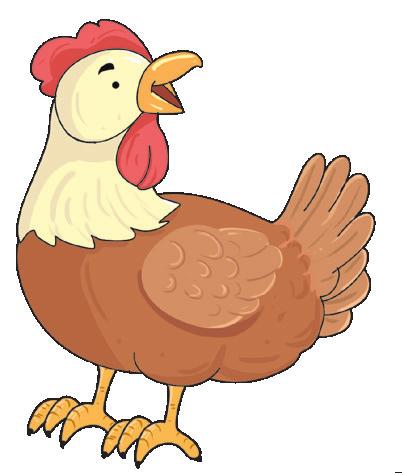
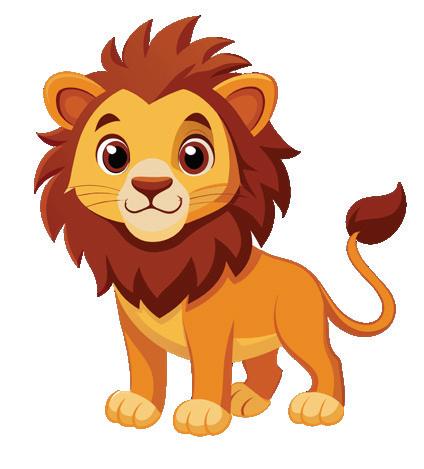

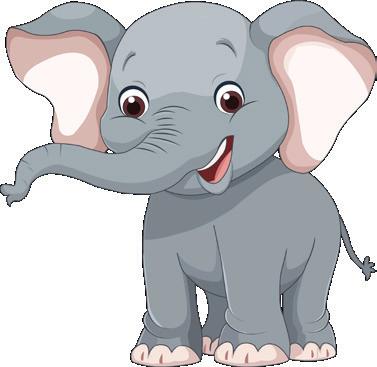

2. Tick (✓) the good manners and cross out (✘) the bad manners.
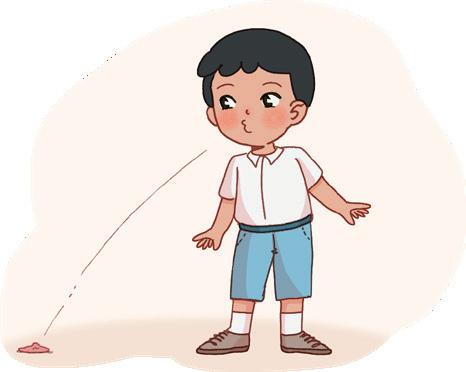
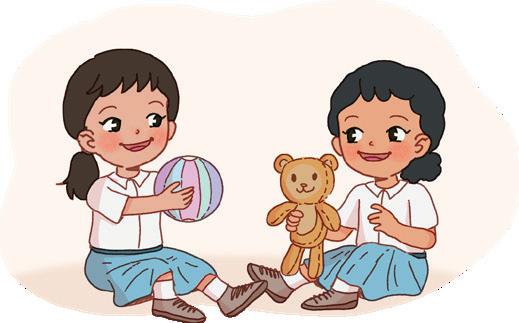


3. Look at the picture. Choose and write the correct name.
Match animals with their young ones.
Distinguish between good and bad manners in school.
Recognises places around us.






1. Match the animals with their young ones.





2. Tick (✓) the good manners and cross out (✘) the bad manners.




3. Look at the picture. Choose and write the correct name.
Match animals with their young ones.
Distinguish between good and bad manners in school. Recognises places around us.






1. Match the animals with their young ones.





2. Tick (✓) the good manners and cross out (✘) the bad manners.




3. Look at the picture. Choose and write the correct name.
Match animals with their young ones.
Distinguish between good and bad manners in school. Recognises places around us.






1. Match the animals with their young ones.





2. Tick (✓) the good manners and cross out (✘) the bad manners.




3. Look at the picture. Choose and write the correct name.
Match animals with their young ones.
Distinguish between good and bad manners in school. Recognises places around us.






1. Match the animals with their young ones.





2. Tick (✓) the good manners and cross out (✘) the bad manners..




3. Look at the picture. Choose and write the correct name.
Match animals with their young ones.
Distinguish between good and bad manners in school.
Recognises places around us.






1. Match the animals with their young ones.





2. Tick (✓) the good manners and cross out (✘) the bad manners.




3. Look at the picture. Choose and write the correct name.
Match animals with their young ones.
Distinguish between good and bad manners in school. Recognises places around us.






1. Match the animals with their young ones.





2. Tick (✓) the good manners and cross out (✘) the bad manners.




3. Look at the picture. Choose and write the correct name.
Match animals with their young ones.
Distinguish between good and bad manners in school.
Recognises places around us.






1. Match the animals with their young ones.





2. Tick (✓) the good manners and cross out (✘) the bad manners.




3. Look at the picture. Choose and write the correct name.
Match animals with their young ones.
Distinguish between good and bad manners in school.
Recognises places around us.






1. Match the animals with their young ones.





2. Tick (✓) the good manners and cross out (✘) the bad manners.




3. Look at the picture. Choose and write the correct name.
Match animals with their young ones.
Distinguish between good and bad manners in school. Recognises places around us.






1. Match the animals with their young ones.





2. Tick (✓) the good manners and cross out (✘) the bad manners.




3. Look at the picture. Choose and write the correct name.
Match animals with their young ones.
Distinguish between good and bad manners in school. Recognises places around us.
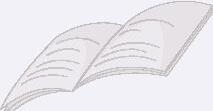






Summative Assessment - 1
Name: Date:

1. Look at the picture. Circle the correct starting letter.

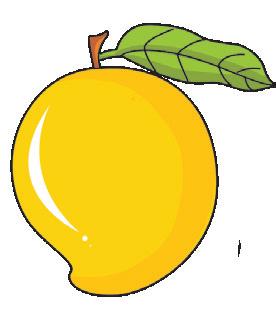

S O P L M R
2. Look at the pictures. Underline the correct word.

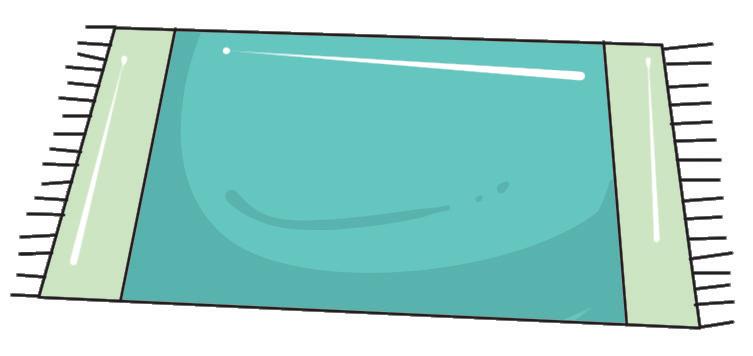
3. Circle the words that have the same middle sound as ‘bed’. cat den jet man hen bag pan web
4. Colour the umbrella red , the raincoat and boots yellow and the puddle blue .
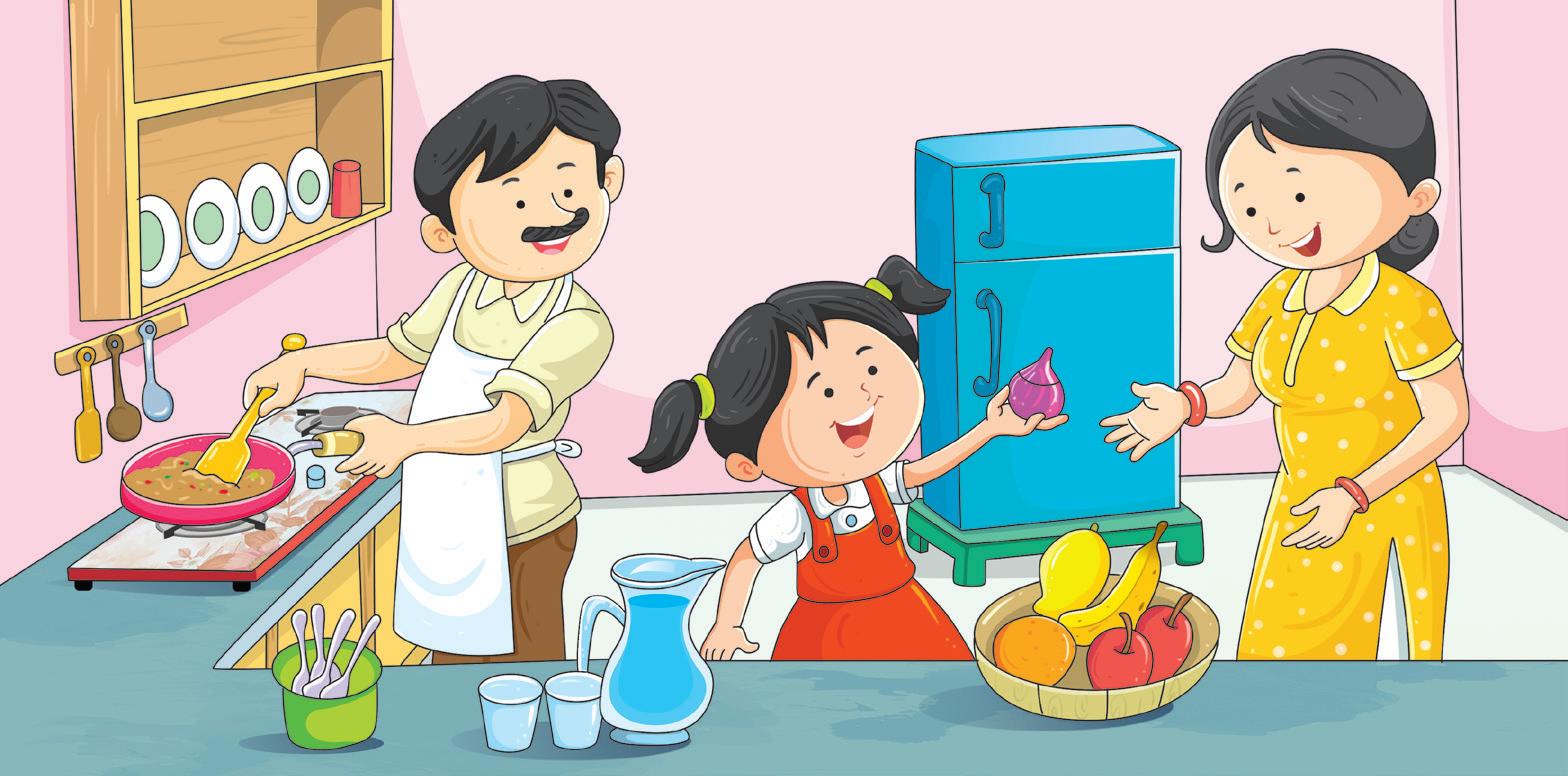
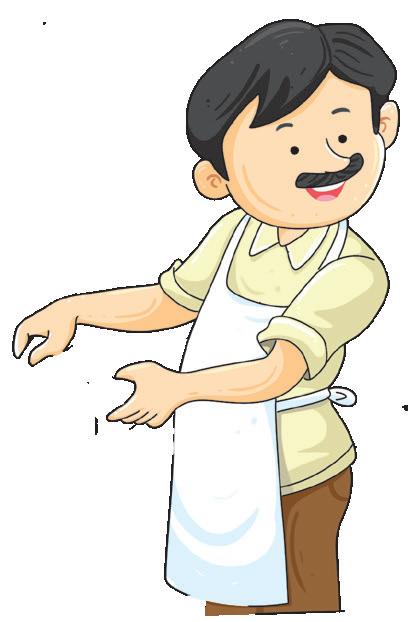
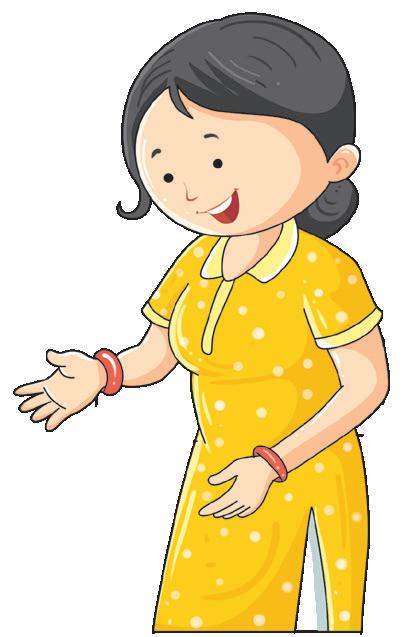
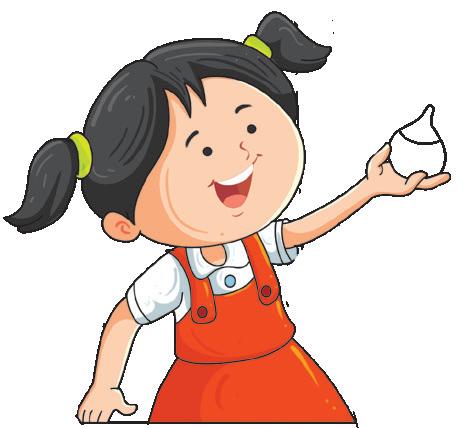
Identifies the starting sound and letter of a picture.
Identifies the correct words with the middle /a/ sound.
Identifies the words with middle /e/ sound.
Use specified colours for the given picture.
Observes and answer a question based on a picture.





Summative Assessment - 1
Name: Date:

1. Look at the picture. Circle the correct starting letter.



S O P L M R
2. Look at the pictures. Underline the correct word.


3. Circle the words that have the same middle sound as ‘bed’. cat den jet man hen bag pan web
4. Colour the umbrella red , the raincoat and boots yellow and the puddle blue .




Identifies the starting sound and letter of a picture.
Identifies the correct words with the middle /a/ sound.
Identifies the words with middle /e/ sound.
Use specified colours for the given picture.
Observes and answer a question based on a picture.





Summative Assessment - 1
Name: Date:

1. Look at the picture. Circle the correct starting letter.



S O P L M R
2. Look at the pictures. Underline the correct word.


3. Circle the words that have the same middle sound as ‘bed’. cat den jet man hen bag pan web
4. Colour the umbrella red , the raincoat and boots yellow and the puddle blue .




Identifies the starting sound and letter of a picture.
Identifies the correct words with the middle /a/ sound.
Identifies the words with middle /e/ sound.
Use specified colours for the given picture.
Observes and answer a question based on a picture.





Summative Assessment - 1
Name: Date:

1. Look at the picture. Circle the correct starting letter.



S O P L M R
2. Look at the pictures. Underline the correct word.


3. Circle the words that have the same middle sound as ‘bed’. cat den jet man hen bag pan web
4. Colour the umbrella red , the raincoat and boots yellow and the puddle blue .




Identifies the starting sound and letter of a picture.
Identifies the correct words with the middle /a/ sound.
Identifies the words with middle /e/ sound.
Use specified colours for the given picture.
Observes and answer a question based on a picture.





Summative Assessment - 1
Name: Date:

1. Look at the picture. Circle the correct starting letter.



S O P L M R
2. Look at the pictures. Underline the correct word.


3. Circle the words that have the same middle sound as ‘bed’. cat den jet man hen bag pan web
4. Colour the umbrella red , the raincoat and boots yellow and the puddle blue .




Identifies the starting sound and letter of a picture.
Identifies the correct words with the middle /a/ sound.
Identifies the words with middle /e/ sound.
Use specified colours for the given picture.
Observes and answer a question based on a picture.





Summative Assessment - 1
Name: Date:

1. Look at the picture. Circle the correct starting letter.



S O P L M R
2. Look at the pictures. Underline the correct word.


3. Circle the words that have the same middle sound as ‘bed’. cat den jet man hen bag pan web
4. Colour the umbrella red , the raincoat and boots yellow and the puddle blue .




Identifies the starting sound and letter of a picture.
Identifies the correct words with the middle /a/ sound.
Identifies the words with middle /e/ sound.
Use specified colours for the given picture.
Observes and answer a question based on a picture.





Summative Assessment - 1
Name: Date:

1. Look at the picture. Circle the correct starting letter.



S O P L M R
2. Look at the pictures. Underline the correct word.


3. Circle the words that have the same middle sound as ‘bed’. cat den jet man hen bag pan web
4. Colour the umbrella red , the raincoat and boots yellow and the puddle blue .




Identifies the starting sound and letter of a picture.
Identifies the correct words with the middle /a/ sound.
Identifies the words with middle /e/ sound.
Use specified colours for the given picture.
Observes and answer a question based on a picture.





Summative Assessment - 1
Name: Date:

1. Look at the picture. Circle the correct starting letter.



S O P L M R
2. Look at the pictures. Underline the correct word.


3. Circle the words that have the same middle sound as ‘bed’. cat den jet man hen bag pan web
4. Colour the umbrella red , the raincoat and boots yellow and the puddle blue .




Identifies the starting sound and letter of a picture.
Identifies the correct words with the middle /a/ sound.
Identifies the words with middle /e/ sound.
Use specified colours for the given picture.
Observes and answer a question based on a picture.





Summative Assessment - 1
Name: Date:

1. Look at the picture. Circle the correct starting letter.



S O P L M R
2. Look at the pictures. Underline the correct word.


3. Circle the words that have the same middle sound as ‘bed’. cat den jet man hen bag pan web
4. Colour the umbrella red , the raincoat and boots yellow and the puddle blue .




Identifies the starting sound and letter of a picture.
Identifies the correct words with the middle /a/ sound.
Identifies the words with middle /e/ sound.
Use specified colours for the given picture.
Observes and answer a question based on a picture.





Summative Assessment - 1
Name: Date:

1. Look at the picture. Circle the correct starting letter.



S O P L M R
2. Look at the pictures. Underline the correct word.


3. Circle the words that have the same middle sound as ‘bed’. cat den jet man hen bag pan web
4. Colour the umbrella red , the raincoat and boots yellow and the puddle blue .




Identifies the starting sound and letter of a picture.
Identifies the correct words with the middle /a/ sound.
Identifies the words with middle /e/ sound.
Use specified colours for the given picture.
Observes and answer a question based on a picture.






Name: Date:
1. Look at the numbers and write their number names.
2. Circle the number that comes after 65.
3. Look at the numbers below. Write the missing numbers.






























4. Count and write the number in the box for each set. 10 and 3 more make _______ 10 and 7 more make _______
5. Colour the things that look like triangles.
Write the number names.
Identifies the number that comes after.
Write the missing numbers between 21 to 30.
Count the numbers by grouping in tens.
Identifies triangles in one’s surroundings correctly.
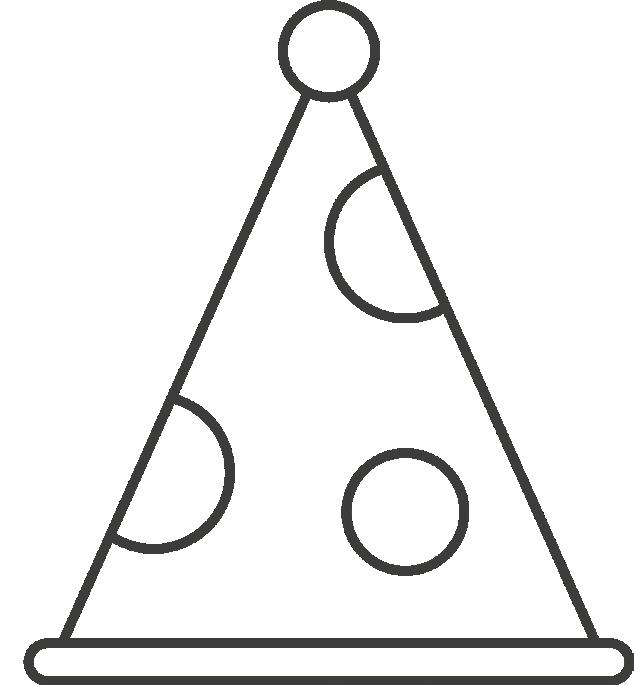






Name: Date:
1. Look at the numbers and write their number names.
2. Circle the number that comes after 65.
3. Look at the numbers below. Write the missing numbers.






























4. Count and write the number in the box for each set. 10 and 3 more make _______ 10 and 7 more make _______
5. Colour the things that look like triangles.
Write the number names.
Identifies the number that comes after.
Write the missing numbers between 21 to 30.
Count the numbers by grouping in tens.
Identifies triangles in one’s surroundings correctly.







Name: Date:
1. Look at the numbers and write their number names.
2. Circle the number that comes after 65.
3. Look at the numbers below. Write the missing numbers.






























4. Count and write the number in the box for each set. 10 and 3 more make _______ 10 and 7 more make _______
5. Colour the things that look like triangles.
Write the number names.
Identifies the number that comes after.
Write the missing numbers between 21 to 30.
Count the numbers by grouping in tens.
Identifies triangles in one’s surroundings correctly.







Name: Date:
1. Look at the numbers and write their number names.
2. Circle the number that comes after 65.
3. Look at the numbers below. Write the missing numbers.






























4. Count and write the number in the box for each set. 10 and 3 more make _______ 10 and 7 more make _______
5. Colour the things that look like triangles.
Write the number names.
Identifies the number that comes after.
Write the missing numbers between 21 to 30.
Count the numbers by grouping in tens.
Identifies triangles in one’s surroundings correctly.







Name: Date:
1. Look at the numbers and write their number names.
2. Circle the number that comes after 65.
3. Look at the numbers below. Write the missing numbers.






























4. Count and write the number in the box for each set. 10 and 3 more make _______ 10 and 7 more make _______
5. Colour the things that look like triangles.
Write the number names.
Identifies the number that comes after.
Write the missing numbers between 21 to 30.
Count the numbers by grouping in tens.
Identifies triangles in one’s surroundings correctly.







Name: Date:
1. Look at the numbers and write their number names.
2. Circle the number that comes after 65.
3. Look at the numbers below. Write the missing numbers.






























4. Count and write the number in the box for each set. 10 and 3 more make _______ 10 and 7 more make _______
5. Colour the things that look like triangles.
Write the number names.
Identifies the number that comes after.
Write the missing numbers between 21 to 30.
Count the numbers by grouping in tens.
Identifies triangles in one’s surroundings correctly.







Name: Date:
1. Look at the numbers and write their number names.
2. Circle the number that comes after 65.
3. Look at the numbers below. Write the missing numbers.






























4. Count and write the number in the box for each set. 10 and 3 more make _______ 10 and 7 more make _______
5. Colour the things that look like triangles.
Write the number names.
Identifies the number that comes after.
Write the missing numbers between 21 to 30.
Count the numbers by grouping in tens.
Identifies triangles in one’s surroundings correctly.







Name: Date:
1. Look at the numbers and write their number names.
2. Circle the number that comes after 65.
3. Look at the numbers below. Write the missing numbers.






























4. Count and write the number in the box for each set. 10 and 3 more make _______ 10 and 7 more make _______
5. Colour the things that look like triangles.
Write the number names.
Identifies the number that comes after.
Write the missing numbers between 21 to 30.
Count the numbers by grouping in tens.
Identifies triangles in one’s surroundings correctly.







Name: Date:
1. Look at the numbers and write their number names.
2. Circle the number that comes after 65.
3. Look at the numbers below. Write the missing numbers.






























4. Count and write the number in the box for each set. 10 and 3 more make _______ 10 and 7 more make _______
5. Colour the things that look like triangles.
Write the number names.
Identifies the number that comes after.
Write the missing numbers between 21 to 30.
Count the numbers by grouping in tens.
Identifies triangles in one’s surroundings correctly.







Name: Date:
1. Look at the numbers and write their number names.
2. Circle the number that comes after 65.
3. Look at the numbers below. Write the missing numbers.






























4. Count and write the number in the box for each set. 10 and 3 more make _______ 10 and 7 more make _______
5. Colour the things that look like triangles.
Write the number names.
Identifies the number that comes after.
Write the missing numbers between 21 to 30.
Count the numbers by grouping in tens.
Identifies triangles in one’s surroundings correctly.






Name: Date:

1. Tick (✓) the good habits. Cross (✘) out the bad habits.
2. Look at the picture. Choose and write the correct name.
School Bank Hospital
3. Look at these pictures. Circle the outdoor games.
4. Match the animals with their sounds.




5. Look at the pictures. Tick (✓) the correct ways to take care of animals.
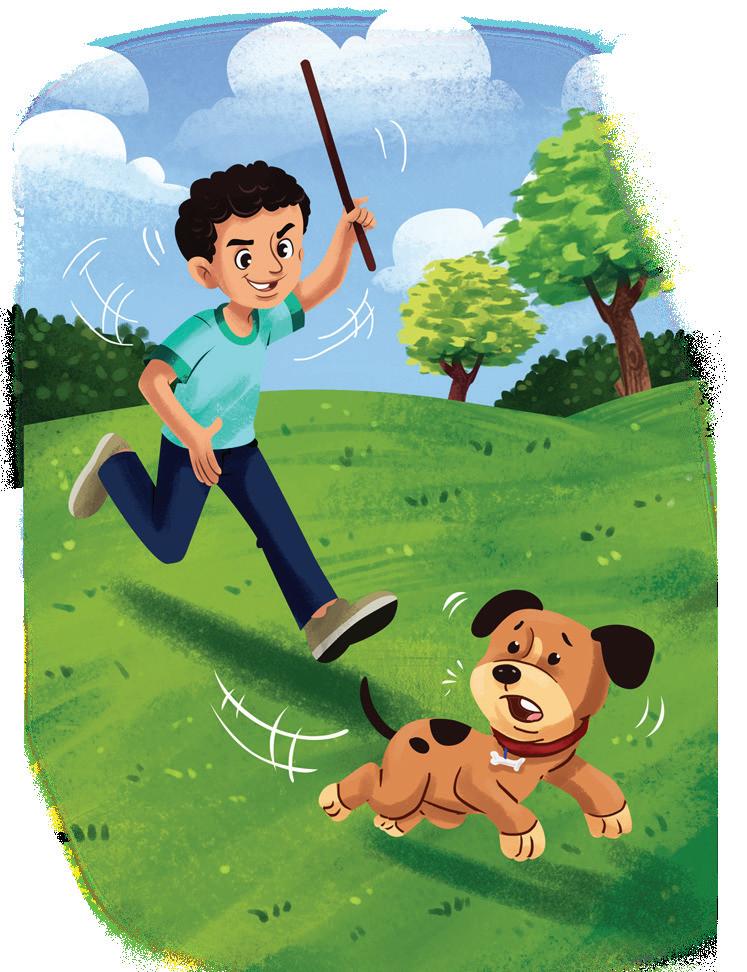
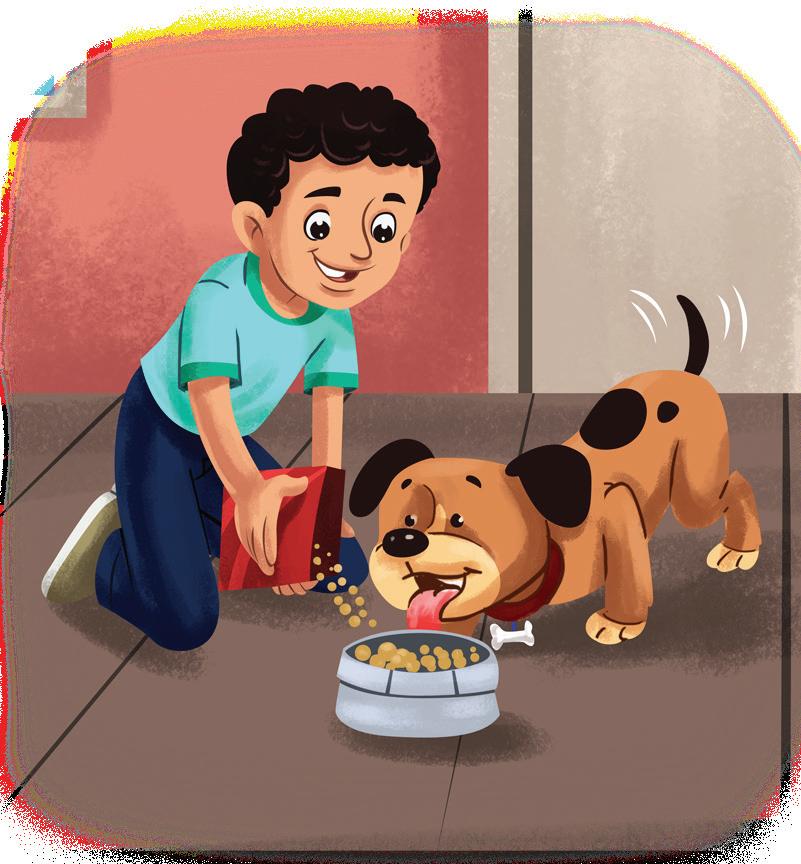

LO
Differentiates between good and bad habits. Recognises places around us.
Identify the outdoor games.
Match the animals with their correct sounds.
Identify the correct ways of taking care of animals.
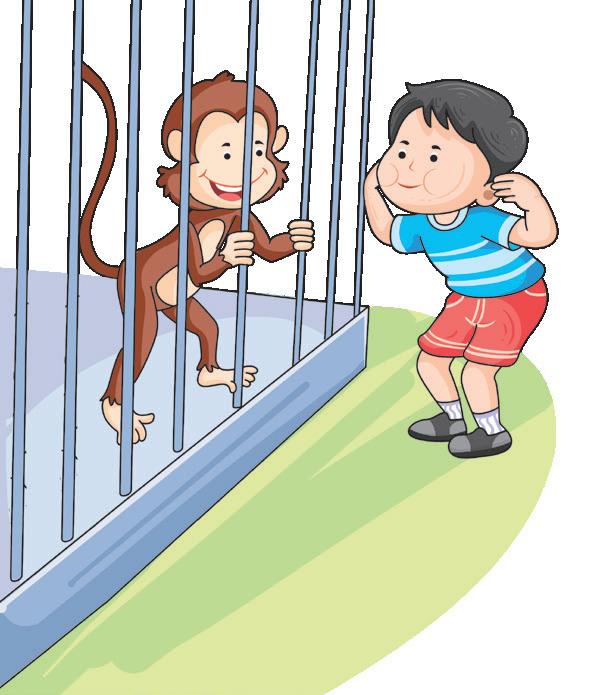





Name: Date:

1. Tick (✓) the good habits. Cross (✘) out the bad habits.
2. Look at the picture. Choose and write the correct name.
School Bank Hospital
3. Look at these pictures. Circle the outdoor games.
4. Match the animals with their sounds.




5. Look at the pictures. Tick (✓) the correct ways to take care of animals.



LO
Differentiates between good and bad habits. Recognises places around us.
Identify the outdoor games.
Match the animals with their correct sounds.
Identify the correct ways of taking care of animals.






Name: Date:

1. Tick (✓) the good habits. Cross (✘) out the bad habits.
2. Look at the picture. Choose and write the correct name.
School Bank Hospital
3. Look at these pictures. Circle the outdoor games.
4. Match the animals with their sounds.




5. Look at the pictures. Tick (✓) the correct ways to take care of animals.



LO
Differentiates between good and bad habits. Recognises places around us.
Identify the outdoor games.
Match the animals with their correct sounds.
Identify the correct ways of taking care of animals.






Name: Date:

1. Tick (✓) the good habits. Cross (✘) out the bad habits.
2. Look at the picture. Choose and write the correct name.
School Bank Hospital
3. Look at these pictures. Circle the outdoor games.
4. Match the animals with their sounds.




5. Look at the pictures. Tick (✓) the correct ways to take care of animals.



Differentiates between good and bad habits. Recognises places around us.
Identify the outdoor games.
Match the animals with their correct sounds.
Identify the correct ways of taking care of animals.






Name: Date:

1. Tick (✓) the good habits. Cross (✘) out the bad habits.
2. Look at the picture. Choose and write the correct name.
School Bank Hospital
3. Look at these pictures. Circle the outdoor games.
4. Match the animals with their sounds.




5. Look at the pictures. Tick (✓) the correct ways to take care of animals.



LO
Differentiates between good and bad habits. Recognises places around us.
Identify the outdoor games.
Match the animals with their correct sounds.
Identify the correct ways of taking care of animals.






Name: Date:

1. Tick (✓) the good habits. Cross (✘) out the bad habits.
2. Look at the picture. Choose and write the correct name.
School Bank Hospital
3. Look at these pictures. Circle the outdoor games.
4. Match the animals with their sounds.




5. Look at the pictures. Tick (✓) the correct ways to take care of animals.



Differentiates between good and bad habits. Recognises places around us.
Identify the outdoor games.
Match the animals with their correct sounds.
Identify the correct ways of taking care of animals.






Name: Date:

1. Tick (✓) the good habits. Cross (✘) out the bad habits.
2. Look at the picture. Choose and write the correct name.
School Bank Hospital
3. Look at these pictures. Circle the outdoor games.
4. Match the animals with their sounds.




5. Look at the pictures. Tick (✓) the correct ways to take care of animals.



LO
Differentiates between good and bad habits. Recognises places around us.
Identify the outdoor games.
Match the animals with their correct sounds.
Identify the correct ways of taking care of animals.






Name: Date:

1. Tick (✓) the good habits. Cross (✘) out the bad habits.
2. Look at the picture. Choose and write the correct name.
School Bank Hospital
3. Look at these pictures. Circle the outdoor games.
4. Match the animals with their sounds.




5. Look at the pictures. Tick (✓) the correct ways to take care of animals.



Differentiates between good and bad habits. Recognises places around us.
Identify the outdoor games.
Match the animals with their correct sounds.
Identify the correct ways of taking care of animals.






Name: Date:

1. Tick (✓) the good habits. Cross (✘) out the bad habits.
2. Look at the picture. Choose and write the correct name.
School Bank Hospital
3. Look at these pictures. Circle the outdoor games.
4. Match the animals with their sounds.




5. Look at the pictures. Tick (✓) the correct ways to take care of animals.



Differentiates between good and bad habits. Recognises places around us.
Identify the outdoor games.
Match the animals with their correct sounds.
Identify the correct ways of taking care of animals.






Name: Date:

1. Tick (✓) the good habits. Cross (✘) out the bad habits.
2. Look at the picture. Choose and write the correct name.
School Bank Hospital
3. Look at these pictures. Circle the outdoor games.
4. Match the animals with their sounds.




5. Look at the pictures. Tick (✓) the correct ways to take care of animals.



Differentiates between good and bad habits. Recognises places around us.
Identify the outdoor games.
Match the animals with their correct sounds.
Identify the correct ways of taking care of animals.








Name: Date:

Formative Assessment - 1 a
1. Look at the picture. Say its name aloud. Then, fill in the blank with the correct letter. t _____ p
2. Look at pictures. Circle the correct starting letter.



E T O I U
3. Colour 5 balloons that have vowels in them.
Y O A P Q J E I U Z
Complete a CVC word using the middle sound /a/ correctly.
Identify the starting sound and letter of a picture.
Identify the vowels correctly.






Name: Date:
1. Colour 2 things that look like triangles.

2. Which shapes can you see in this car? Tick (✓) them. rectangle star oval semi-circle
3. Look at the pictures. Tick (✓) the smallest tree.
Circle the animal that is bigger than the tiger.



Identify triangles in one’s surroundings correctly.
Identify different shapes such as a rectangle and a semi-circle.
Compare different sizes correctly.





Solved Formative Assessment - 1
Name: Date:

1. Which of these things are soft to touch? Tick (✓) the 2 things.

2. Look at these pictures. Write I for indoor games. Write O for outdoor games.
3. Rohan goes to a fair. He gets lost. Tick (✓) what he should do next.



Identify things that are soft on the basis of the sense of touch.
Differentiate between indoor and outdoor games correctly.
Identify the correct action when one gets lost.





Solved Formative Assessment - 2
Name: Date:

1. Look at the pictures. Say their names aloud. Circle the ones that have the middle /i/ sound.




2. Look at the pictures. Underline the correct word.


3. Look at the pictures and circle the correct word.


Identify pictures with the middle /i/ vowel sound.
Identify the correct words with the middle /o/ sound.
Identify the correct word with the middle /e/ sound.
Proficient




Solved Formative Assessment - 2 Numeracy

Name: Date:

1. Colour the balloons that have numbers between 71 to 80.
2. Count and write the number in the box for each set.


























6 3 8 11 Six Three Eight 15
3. Look at the number and write the number name.
Learning Outcomes
Identifies the numbers between 71 and 80. Count the numbers by grouping in tens. Write the number names.
Beginner (B)
Learner (L)
Proficient (P)






1. Match the animals with their young ones.





2. Tick (✓) the good manners and cross out (✘) the bad manners.




3. Look at the picture. Choose and write the correct name.
School Bank Park
Proficient
Match animals with their young ones.
Distinguish between good and bad manners in school.
Recognises places around us.





Solved Summative Assessment - 1
Name: Date:

1. Look at the picture. Circle the correct starting letter.



S O P L M R
2. Look at the pictures. Underline the correct word.


3. Circle the words that have the same middle sound as ‘bed’.
4. Colour the umbrella red , the raincoat and boots yellow and the puddle blue .




Identifies the starting sound and letter of a picture.
Identifies the correct words with the middle /a/ sound.
Identifies the words with middle /e/ sound.
Use specified colours for the given picture.
Observes and answer a question based on a picture.





Solved Summative Assessment - 1
Name: Date:

1. Look at the numbers and write their number names.
4 9 7
Four Nine Seven
2. Circle the number that comes after 65.
3. Look at the numbers below. Write the missing numbers.
4. Count and write the number in the box for each set.






























Write the number names.
Identifies the number that comes after.
Write the missing numbers between 21 to 30.
Count the numbers by grouping in tens.
Identifies triangles in one’s surroundings correctly.
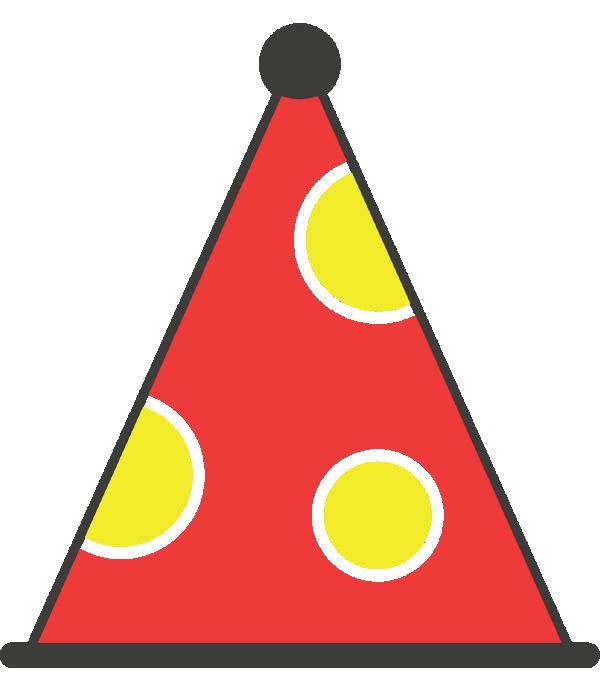






Tick (✓) the good habits. Cross (✘) out the bad habits.
2. Look at the picture. Choose and write the correct name. School Bank Hospital
3. Look at these pictures. Circle the outdoor games. Hospital
4. Match the animals with their sounds.




5. Look at the pictures. Tick (✓) the correct ways to take care of animals.



Differentiates between good and bad habits. Recognises places around us.
Identify the outdoor games.
Match the animals with their correct sounds.
Identify the correct ways of taking care of animals.

In alignment with the National Curriculum Framework—Foundational Stage, these assessments embrace the principles of holistic development in children, and facilitate continuous and comprehensive evaluation that informs educators and parents about their learners’ progress in a way that is both meaningful and appropriate for their developmental stage. The carefully curated assessments encourage revision of key concepts at regular intervals, making the assessment process an extension of the child’s natural learning journey. Each detachable, two-sided question paper includes three questions each for Formative Assessments 1–2 and five questions each for Summative Assessment 1 from Literacy, Numeracy and General Awareness, helping educators track progress and reinforce key concepts through active engagement and critical thinking.
• Holistic Assessments: Covers General Awareness, Literacy, and Numeracy in each assessment, ensuring a well-rounded evaluation.
• Child-friendly Format: Simple and engaging question papers designed especially for learners.
• Analysis of Learning Outcomes: Tracks the learners’ understanding of the concepts on an outcome analysis table across three levels of progress— Beginner (B), Learner (L), and Proficient (P).
• Teacher- & Parent-friendly Assessments: Provides clear insights into the learners' progress, enabling informed support and guidance.
Uolo partners with K-12 schools to provide technology-enabled learning programs. We believe that pedagogy and technology must come together to deliver scalable learning experiences that generate measurable outcomes. Uolo is trusted by over 15,000+ schools across India, Southeast Asia and the Middle East.

hello@uolo.com